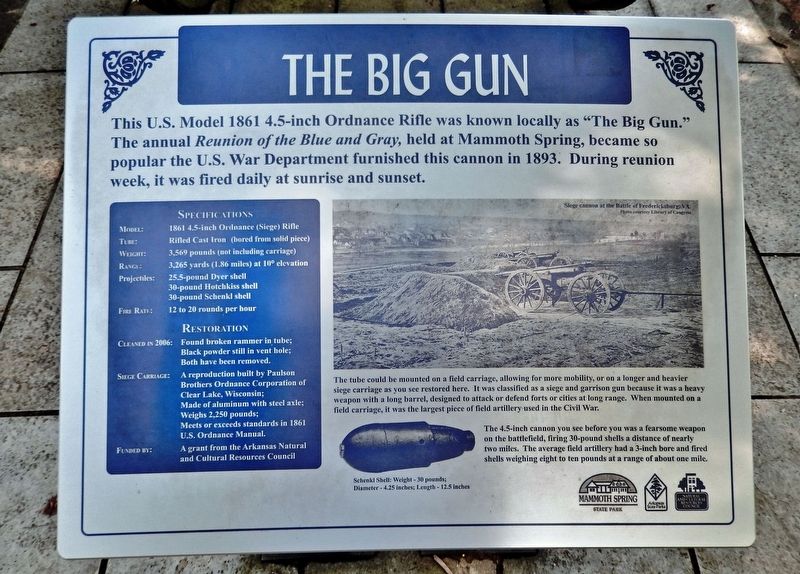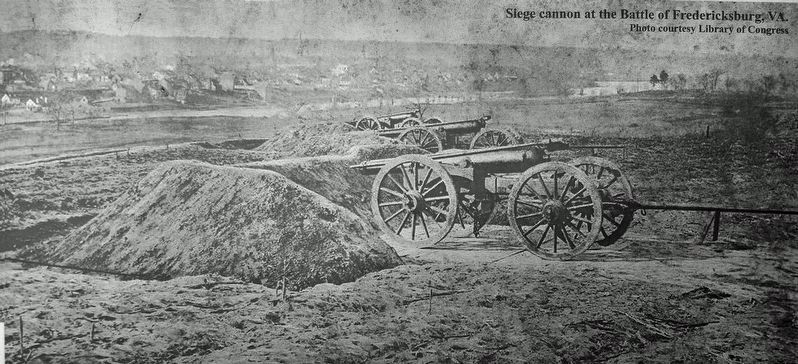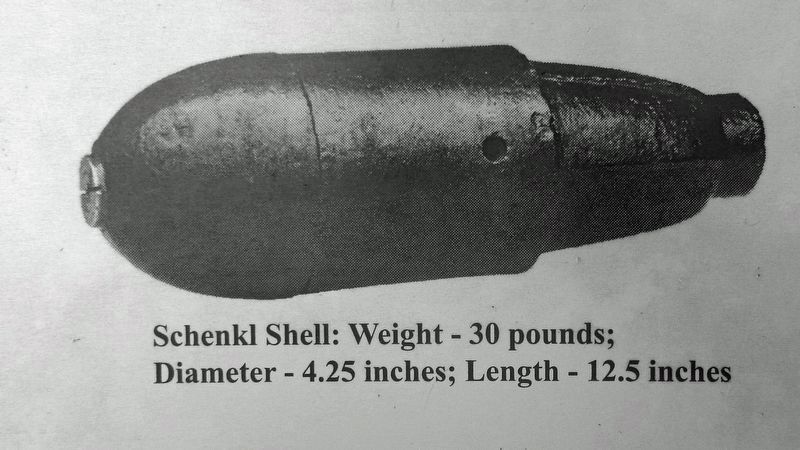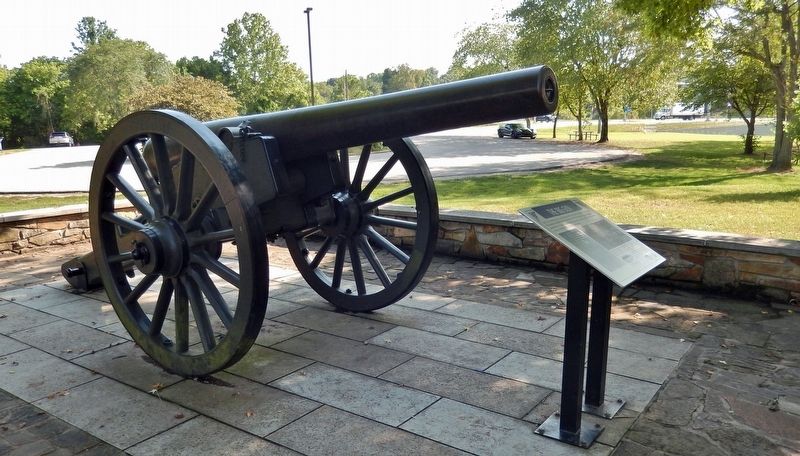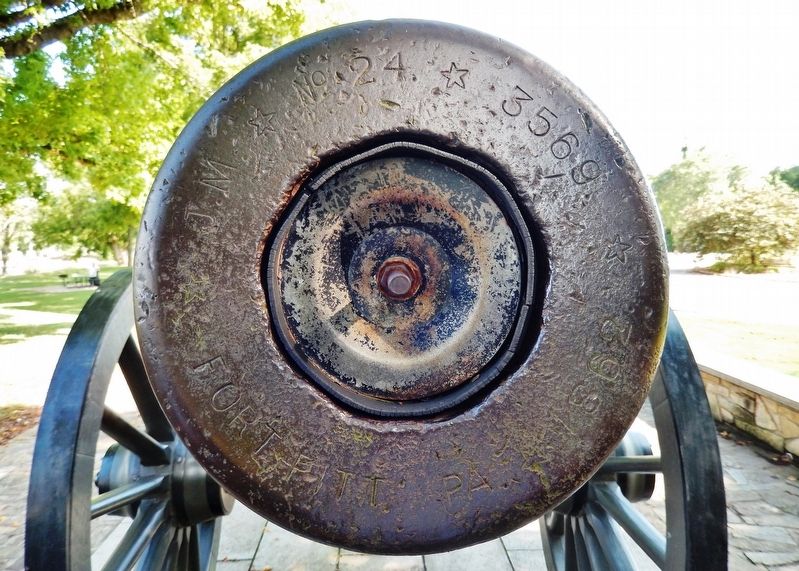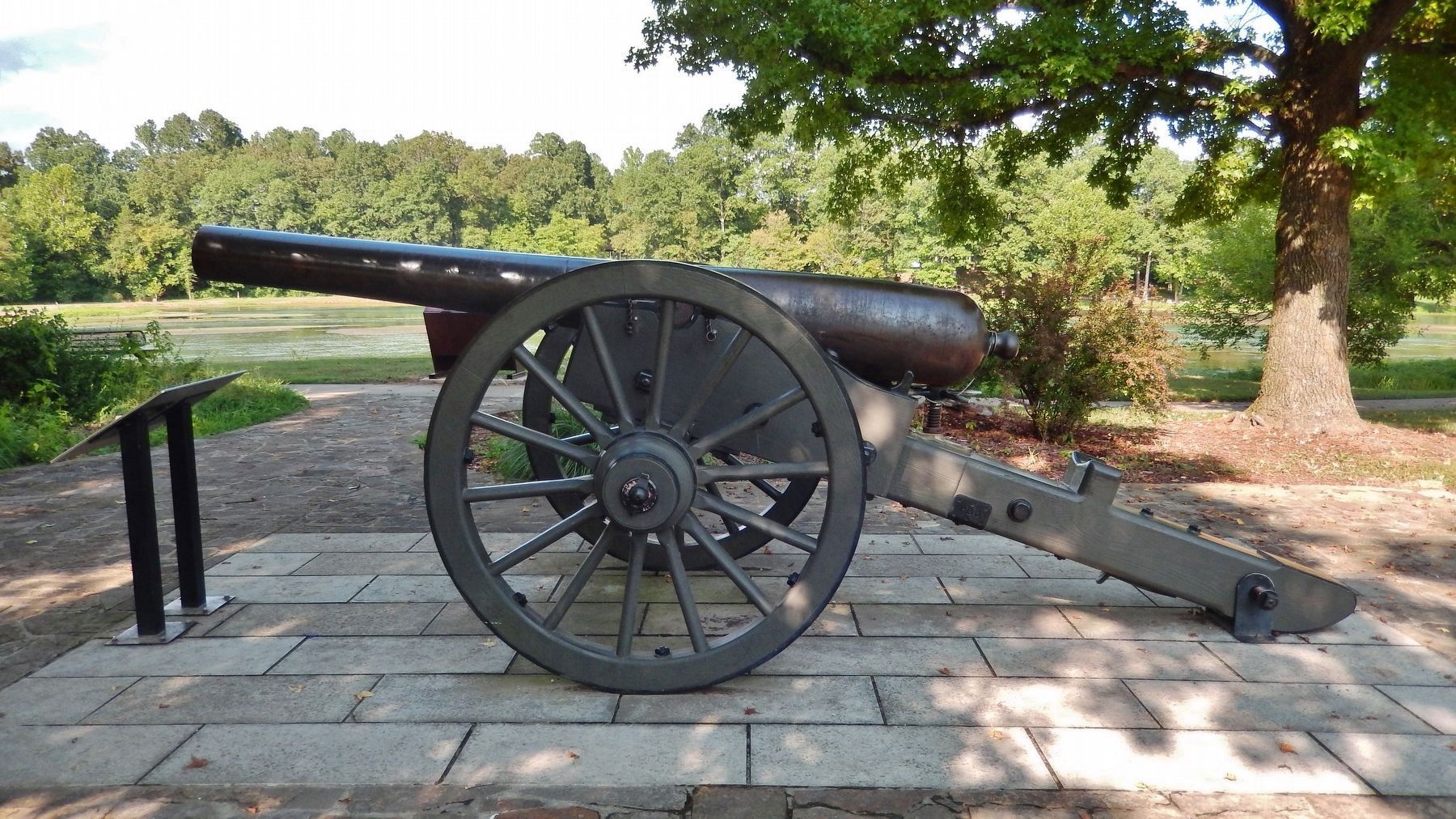Mammoth Spring in Fulton County, Arkansas — The American South (West South Central)
The Big Gun
The tube could be mounted on a field carriage, allowing for more mobility, or on a longer and heavier siege carriage as you see restored here. It was classified as a siege and garrison gun because it was a heavy weapon with a long barrel, designed to attack or defend forts or cities at long range. When mounted on a field carriage, it was the largest piece of field artillery used in the Civil War.
The 4.5-inch cannon you see before you was a fearsome weapon on the battlefield, firing 30-pound shells a distance of nearly two miles. The average field artillery had a 3-inch bore and fired shells weighing eight to ten pounds at a range of about one mile.
Specifications
Model: 1861 4.5-inch Ordnance (Siege) Rifle
Tube: Rifled Cast Iron (bored from solid piece)
Weight: 3,569 pounds (not including carriage)
Range: 3,265 yards (1.86 miles) at 10° elevation
Projectiles: 25.5-pound Dyer shell; 30-pound Hotchkiss shell; 30-pound Schenkl shell
Fire Rate: 12 to 20 rounds per hour
Restoration
Cleaned in 2006: Found broken rammer in tube; Black powder still in vent hole; Both have been removed.
Siege Carriage: A reproduction built by Paulson Brothers Ordnance Corporation of Clear Lake, Wisconsin; Made of aluminum with steel axle; Weighs 2,250 pounds; Meets or exceeds standards in 1861 U.S. Ordnance Manual.
Funded by: A grant from the Arkansas Natural and Cultural Resources Council.
Erected by Mammoth Spring State Park; Arkansas State Parks; and Natural and Cultural Resources Council.
Topics. This historical marker is listed in these topic lists: Parks & Recreational Areas • Patriots & Patriotism • War, US Civil. A significant historical year for this entry is 1861.
Location. 36° 29.787′ N, 91° 32.132′ W. Marker is in Mammoth Spring, Arkansas, in Fulton County. Marker can be reached from the intersection of U.S. 63 and Main Street (State Route 9), on the right when traveling north. Marker and cannon are located along the Mammoth Spring State Park interpretive trail. Touch for map. Marker is at or near this postal address: 17 US Highway 63, Mammoth Spring AR 72554, United States of America. Touch for directions.
Other nearby markers. At least 8 other markers are within walking distance of this marker. Old Soldier's Reunion (here, next to this marker); Mammoth Spring (within shouting distance of this marker); Civil War in Fulton County / Action at Salem (about 300 feet away, measured in a direct line); The Development of Mammoth Spring (about 400 feet away); What Am I Standing On? (about 400 feet away); Dam Site #1 and Mammoth Spring Milling Company (about 400 feet away); Arkansas-Missouri Power Company (about 600 feet away); The Inspiration for The Grand Ole Opry (about 700 feet away). Touch for a list and map of all markers in Mammoth Spring.
Related markers. Click here for a list of markers that are related to this marker. Mammoth Spring State Park
Also see . . . Siege artillery in the American Civil War.
The 4.5-inch siege rifle looks like a larger version of the 3-inch ordnance rifle. However, the 4.5-inch siege rifle was of conventional cast iron construction and did not use the welded wrought iron construction of the 3-inch ordnance rifle. The gun's only vice was that it suffered from excessive erosion of the vent caused by the hot gasses flowing through the vent when the gun was fired. The vent could become too large to fire the piece after 400 discharges. The big guns were intended for long range firing against Confederate artillery.(Submitted on February 17, 2022, by Cosmos Mariner of Cape Canaveral, Florida.)
Credits. This page was last revised on February 17, 2022. It was originally submitted on February 17, 2022, by Cosmos Mariner of Cape Canaveral, Florida. This page has been viewed 356 times since then and 71 times this year. Photos: 1, 2, 3, 4, 5, 6. submitted on February 17, 2022, by Cosmos Mariner of Cape Canaveral, Florida.
